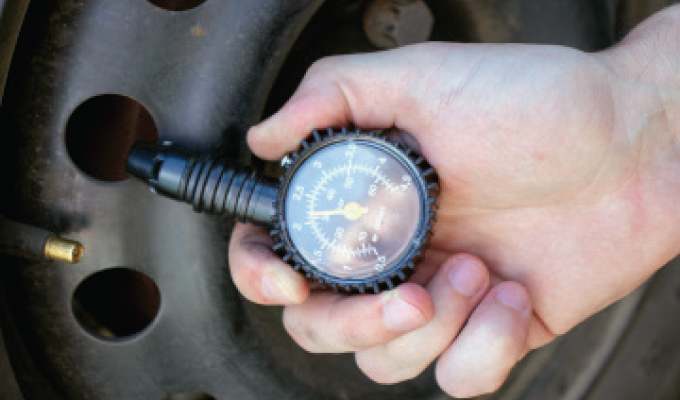By Mike Skoropad
A recent study by Continental Tires found that 34% of fleet drivers regularly ride on underinflated tires. Aside from reducing traction and increasing braking distances, driving on underinflated tires can decrease your fleet’s fuel economy. The NHTSA has found that every 1% that a tire is below its recommended inflation level, gas mileage is reduced by 0.3%.
In short, whenever a fleet driver rides on underinflated tires they are both increasing their own risk of accident and pushing up a company’s operating costs. It should therefore be a priority for any fleet company to try and reduce the number of miles driven on underinflated tires.
DRIVER EDUCATION
Continental’s study into fleet drivers’ behavior revealed the worrying statistic that 17% of drivers do not know how to check their tire pressure. Although fleet managers may try to explain away this fact by pointing toward the fact that modern trucks come with tire pressure monitoring systems, these only alert a driver when tire pressure falls below 25% the recommended level. If you want to maximize fuel economy, then drops in pressure need to be noticed and rectified before this stage.
Getting this right starts with driver education. For many fleets responsibility for safety and maintenance of vehicles falls with fleet managers and technicians. This neglects the fact that it’s only drivers who work with vehicles day in and day out that can truly implement preventive maintenance like keeping tires optimally inflated.
The following skills should be taught to drivers during their fleet training:
- How to check tire pressure.
- Staying conscious of which gas stations have tire pump services.
- How to visually diagnose early signs of tire damage.
- How to inflate your own tires in case of emergency.
Drivers should also understand the reasons why keeping their tires inflated is so important so they have the motivation to implement tire maintenance.
INCENTIVES
Since one of the biggest reasons why fleet operators want their drivers to be diligent in keeping their tires at the recommended inflation are the fuel savings that it will create, operators have the margin to offer incentives to drivers to ensure this happens.
Operators have a couple of ways to incentivize drivers to keep their tires inflated. These include:
- Offering incentives around fuel consumption. Tire inflatedness is one of the biggest determinates around a vehicle’s fuel consumption along with driving technique. Offering bonuses around achieving a certain mile per gallon (or below) can therefore directly reward drivers who diligently maintain their tire inflation.
- Offering incentives around regular tire pressure checks. Drivers can be rewarded specifically for checking and maintaining their tire pressure. To do this, you just need to make your drivers fill out a logbook once every two weeks with their measured tire pressure and (crucially) photos of their tire pressure gauge readings. Reward your drivers for keeping this logbook full every quarter.
Since fuel costs account for around 60% of a fleet’s total operating costs, offering your drivers a small bonus to keep their tires fully inflated should pay itself back in spades over time.

CHECKS & COMMUNICATION
As well as incentivizing drivers with rewards for keeping their tires inflated, fleet operators can also keep drivers accountable by putting in place a system of spot checks to ensure that tire maintenance is performed regularly.
Your technicians and maintenance team are a great place to start with these spot checks. Signs of long-term tire underinflation can be easily diagnosed visually by technicians with tire side wear being the clearest indicator of this. If one of your vehicle technicians spots tire side wear, then this should be a reason to remind the driver about the importance of keeping their tires inflated. If this happens more than once, then this could be a sign that the driver needs training.
Spot checks can also be performed by fleet managers at common stops on drivers’ routes. These checks can include checks on the tire pressure itself, as well as checks that a driver has a tire pressure gauge in their possession. Penalties should be given to those who regularly fail these inspections.
ABOUT THE AUTHOR
Mike Skoropad is the owner and head technician at tire retailer United Tires. Find out more, visit www.utires.com.




